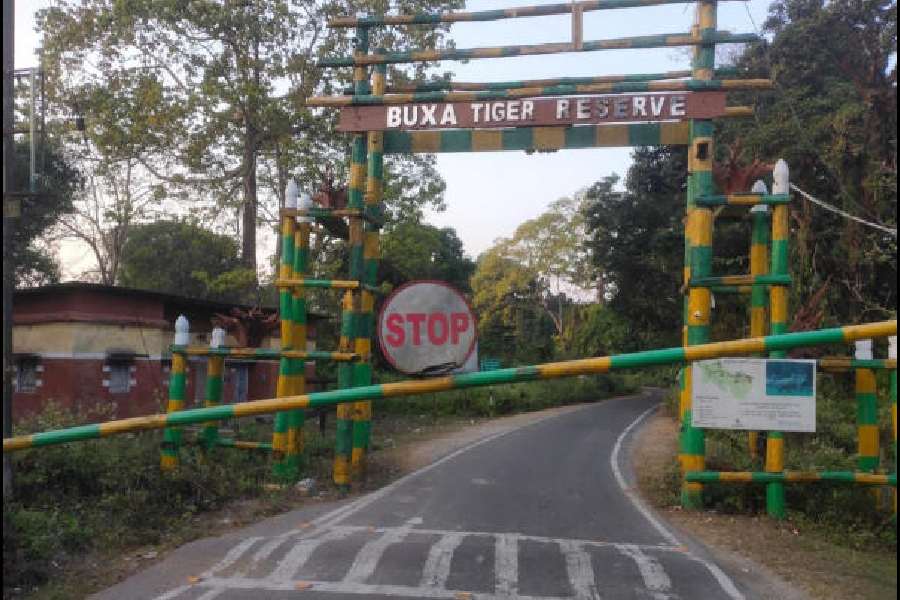The state forest department has taken up a pilot project to revive a stretch of the elephant corridor in north Bengal.
The decision, made at a recent meeting in Madarihat of Alipurduar in the presence of Jyotipriyo Mallick, the state forest minister, has been taken to find out if the revival of the stretch helps in mitigating human-elephant conflicts in human habitats near the stretch.
Sources in the department said according to the revival plan, different varieties of trees and plants, which serve as fodder for elephants, would be extensively planted along the stretch. Water bodies would also be created for the animals.
“We have taken up a pilot project to revive a stretch of the corridor between Jaldapara National Park and Buxa Tiger Reserve (both in Alipurduar district), via Bharnobari tea estate. For the revival of the stretch, we have asked certain tea companies to provide some land from their tea estates which are contiguous to the corridor,” said Ujjwal Ghosh, the additional principal chief conservator of forests (north).
“The idea is to develop at least a 5km stretch of a corridor with adequate fodder and water. The corridor will be around 300 metres wide with energised fences on both sides,” said a forester.
In north Bengal, the elephant corridor stretches between Mechi, the river that is on the Indo-Nepal border in the south (near Naxalbari of Siliguri sub-division), and till Sankosh river that flows at the interstate border of Bengal and Assam.
En route, elephant herds cross through different patches of forests, including wildlife sanctuaries and national parks like Mahananda, Gorumara, Chapramari, Jaldapara, and Buxa.
The state forest department estimates the population of wild elephants in the region as close to 600.
In the region, corridors through which elephant herds move are considered one of the key reasons for the rise in cases of elephant depredation. Elephants often enter adjoining villages, which leads to the loss of human lives, crops, and other properties. Also, elephants have died in a number of cases during such intrusions through electrocution and poisoning.
So far, 16 stretches of corridors for elephants have been identified in the region across different districts.
The forested said that if the pilot project works and it is found that elephant herds are not entering nearby hamlets, it will be replicated.










